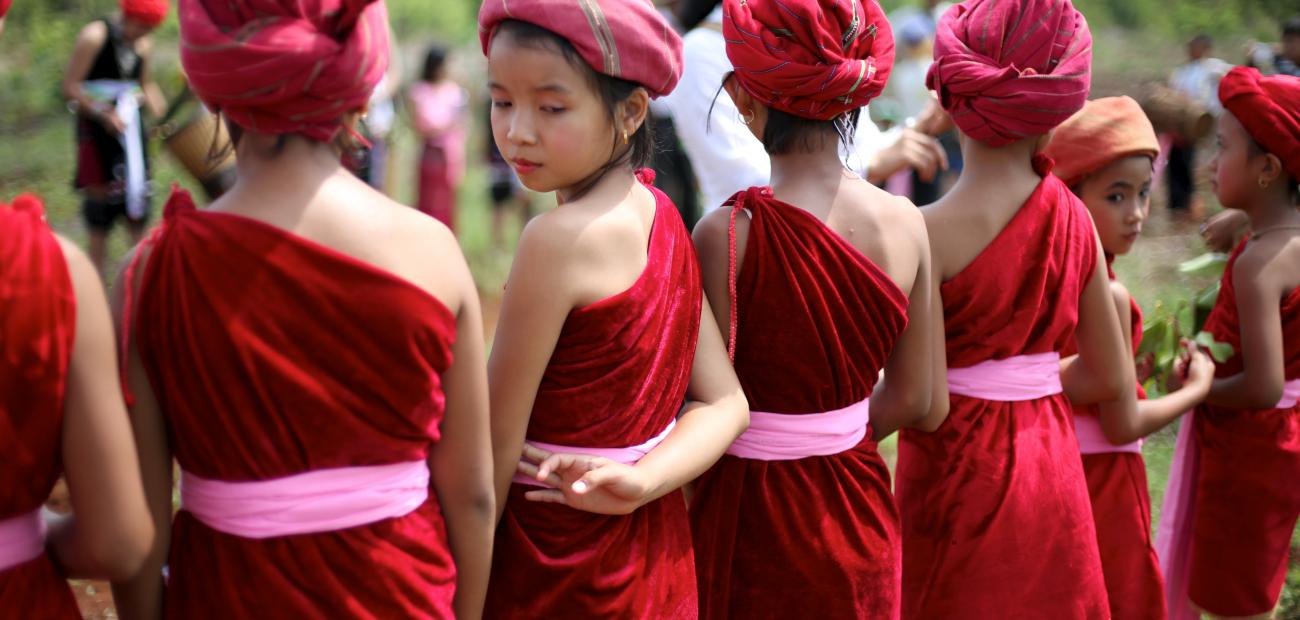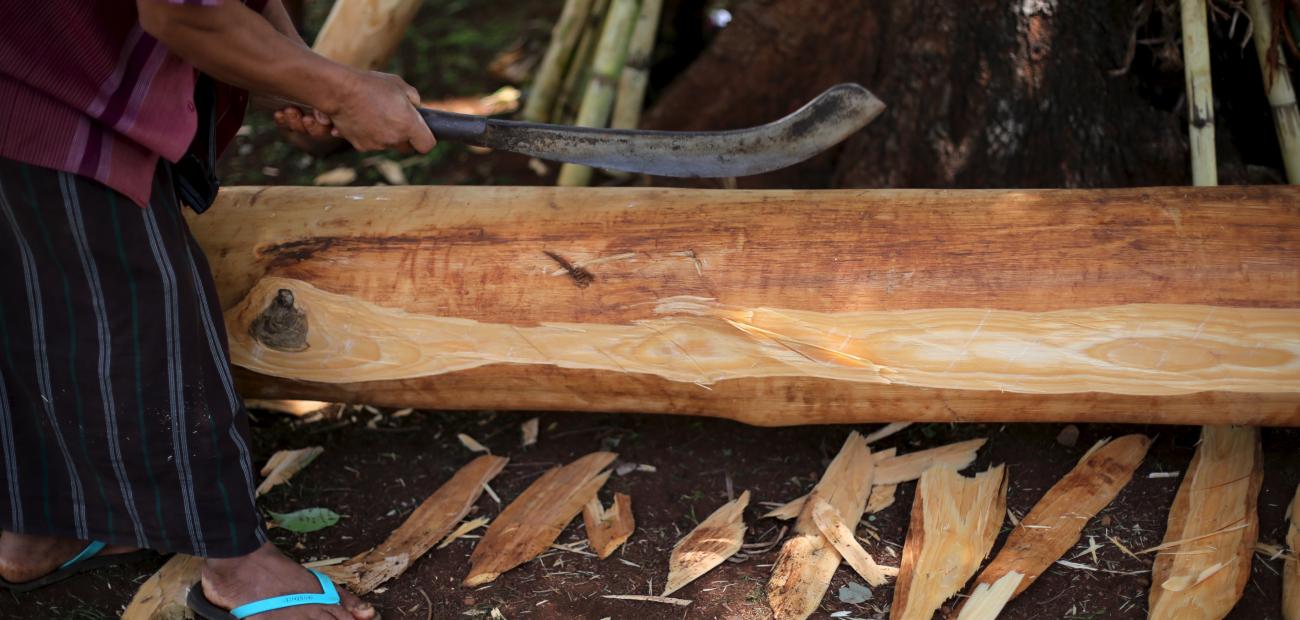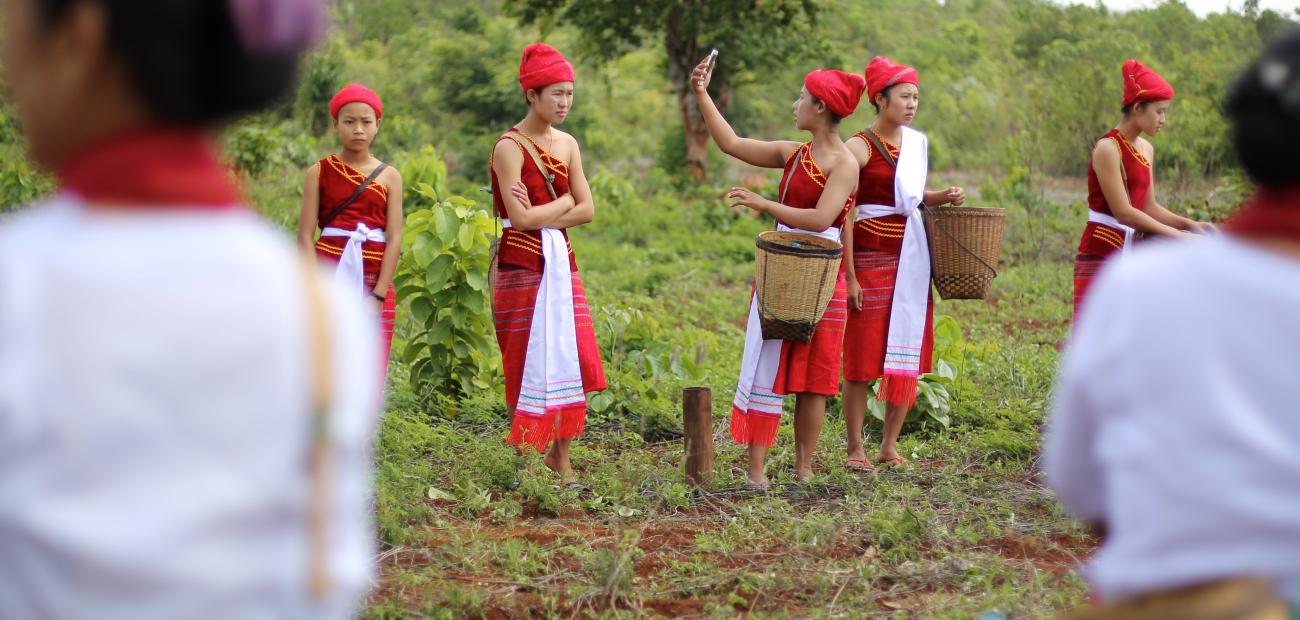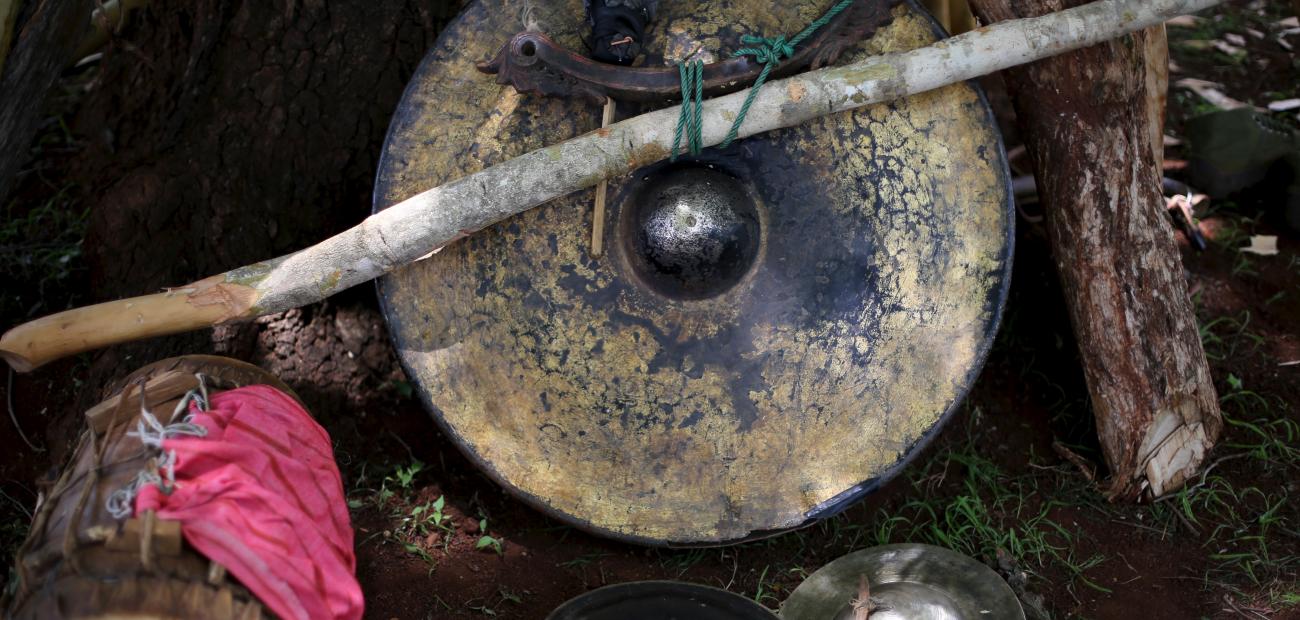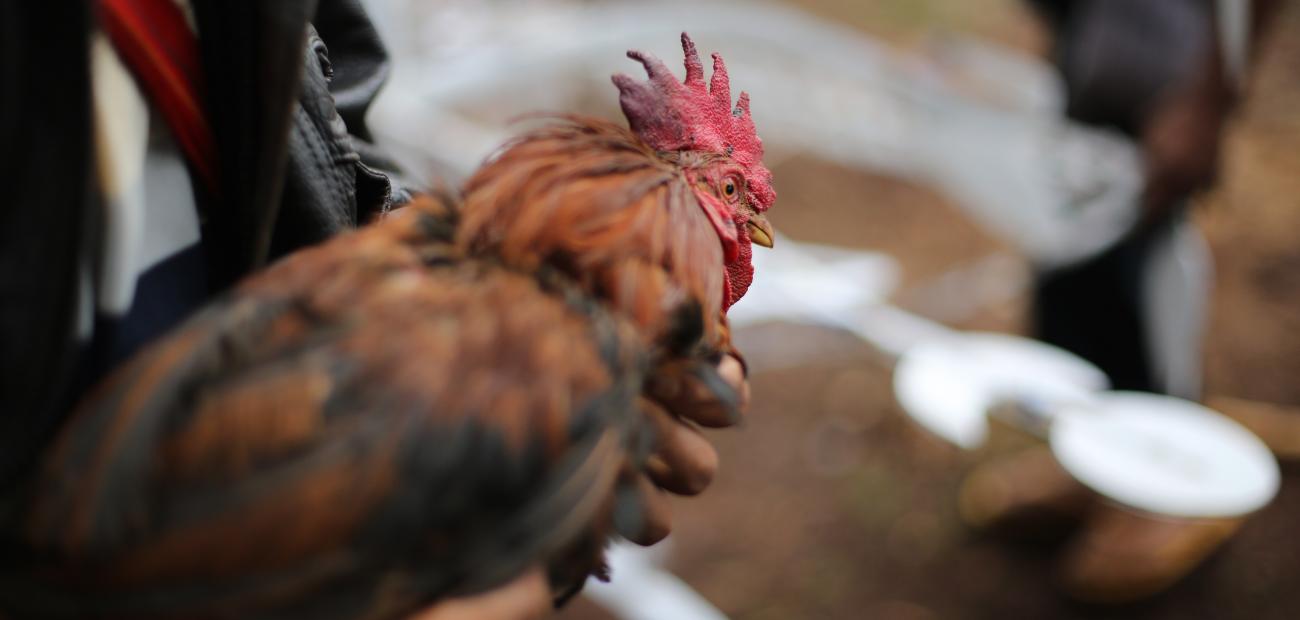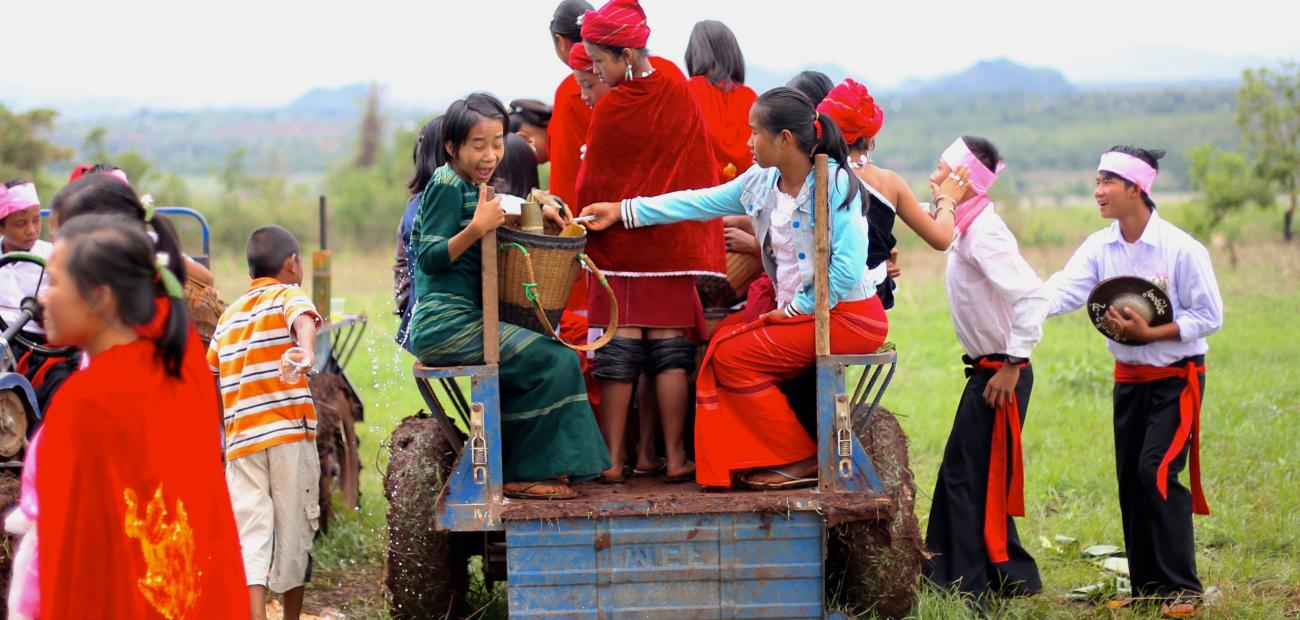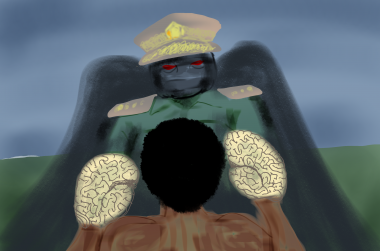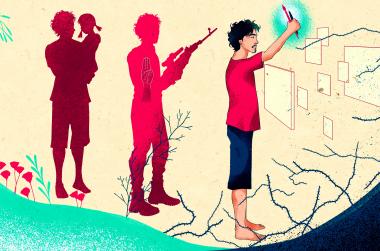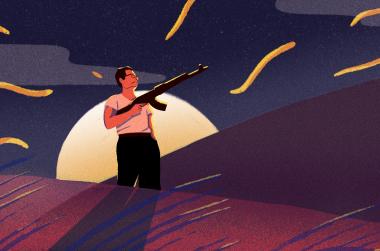This story is part of a series on Kayah traditions. Read the story of one of the people taking part in the festival in The Chicken Bone Apprentice
One of the most enchanting aspects of exploring the verdant landscape in Kayah is seeing fields of tall, straight totem poles soaring into the sky -- the result of a sacred Kayah tradition that locals say is as old as the world itself.
Every year around April or May, several villages band together to select and fell a stately tree from the forest and transform it into a towering totem pole during the three day Kay Htoe Boe festival, held to encourage a prosperous harvest, favourable weather, good health, and peace.
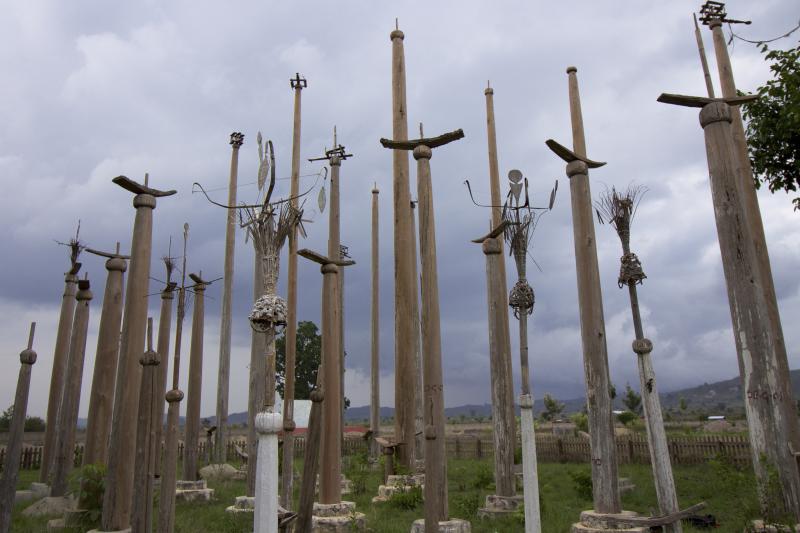
The ceremony is the most important religious event of the year.
Maung Thein, an elder in Chikke village at the edge of Loikaw, the capital of Kayah, is the patron and head of the village committee that organises the festival.
“There are three types of totems -- male, female and the paddy. If the totem this year is male, next year it will be female. You have to alternate them. This year’s one is male. It is much taller than the female. The male totem pole also has a shrine, while the female one doesn’t. The shortest one is called the paddy-ear totem pole. It is raised every year during harvest time around the light festival.
“There are rules governing which tree we chose. It has to be straight. It cannot be infested by bugs or birds. It cannot have any flaws. The tree must not have nests of birds such as vultures or eagles at the top either. Because they are carnivores, we see them as unclean. There must be no vines.
“Totem poles are linked to Buddhism. When you build monasteries and pagodas you always have a totem pole because otherwise it’s not complete.
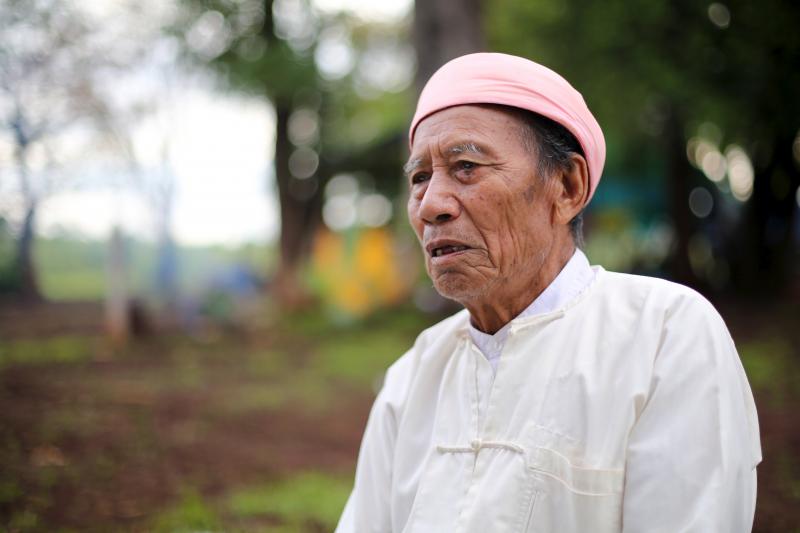
“We organise Kay Htoe Boe festival every year. There are five reasons for the festival -- good weather, plentiful rice, unity, peace and to be free from illness and diseases.
“Kay Htoe Boe is a Kayah term. In Bamar, Kay means a state or region, Htoe means succeed/accomplish and Boe means sacred pole.
“(The raising of the totem pole) has been going on since the world begin. It’s impossible to count how many years.
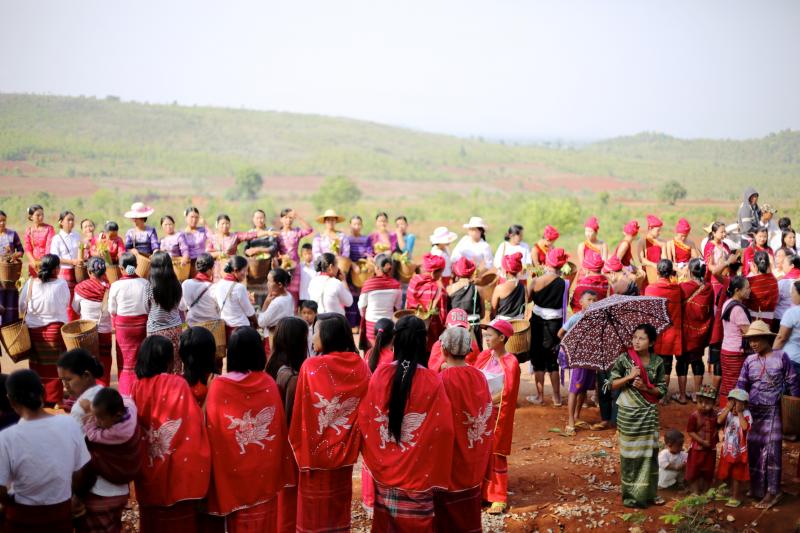
We choose an auspicious date for the festival. We didn’t raise a totem pole earlier this year because there was a death in our village.
"On the selected date, we fell the tree, bring it to the grounds, prepare it, and then erect it. It costs at least 20 to 30 million kyats if we are holding a big festival. For this upcoming event, we asked four or five villages to contribute. Each household chip in a minimum of 2,000 kyats (less than $2). But it depends on your generosity. If you want to give 10,000 kyats, you can.
“Whole villages turn up on the day the tree is felled. People have to avoid eating fermented soya beans, snakehead fish and forest animals like sambar deer. You can eat the chicken or pork or fish that’s in your neighbourhood.
“Before we chop it down, we have to light candles and incense sticks, and offer bananas and eugenia leaves, and ask for permission from the spirits guarding the forest and hills.
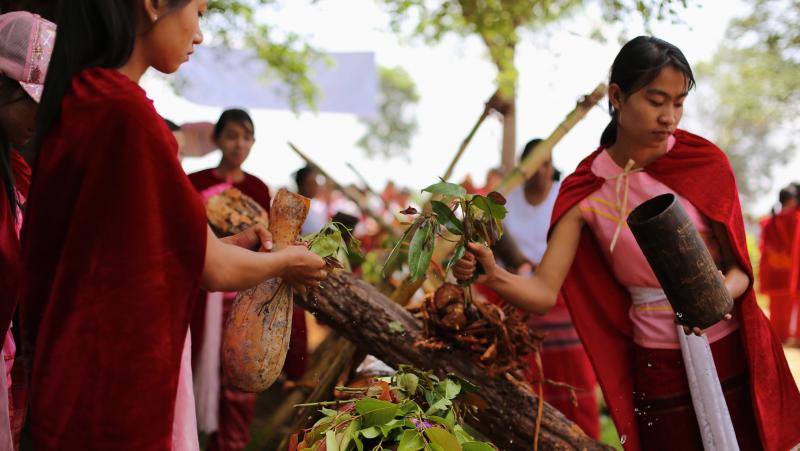
“Once it is felled, you bring it to the area where it would be erected. (Then) you take away the outer layer. Only the descendants of those related to the person who raised the first totem pole can look after it.
“We paint it, make it beautiful. We also make things like the crown.
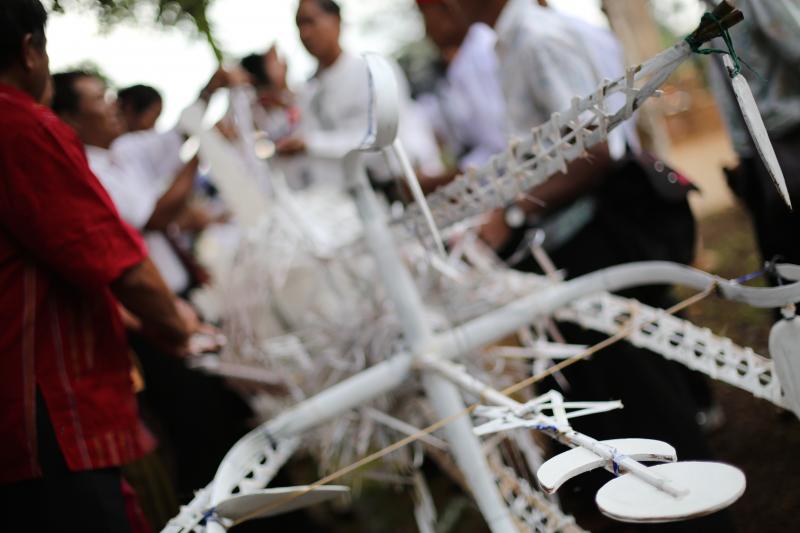
“We will offer fruits and then read the chicken bones, to see whether the future for the village is good for bad. We would take out the thigh bone, and look at the holes in the bones. Some chickens have two holes, some have three. Every chicken has them. If the holes in the right bone are higher than the ones on the left, then it’s considered good.
“You can read chicken bones for occasions of joy as well as sorrow. You could also do it before you travel. But not everyone knows how to do it. If you’re really determined and committed you could learn in three or four days. My father-in-law taught me. I’m also teaching others.

“We would (sometimes) also kill a pig, to predict the health of the Kay Htoe Boe guardian. We would look at the liver. If it has holes, or if it turns blue, or has injuries, then it’s not good. We would also look at the bile and the liquid inside. If there’s less liquid, then there would be less rain in the coming year. There’s also the spleen. If it’s not straight, if it’s curvy, then there’s danger.
“We don’t kill the pig without a reason. We don’t have astrology so we used the pig instead.

“Afterwards, the women have to call the souls back to their house. Women from each household would come near the totem pole, and pick up the grass and bring it back to bring the souls home.
“For us Kayah, Kay Htoe Boe is integral to our tradition. It’s the most important custom. If Kay Htoe Boe tradition disappears or is lost, we Kayah would also disappear.
“It’s a joyful, happy event and it only happens once a year. When you meet other villagers, you also forge bonds with them, and you become more united. It is an event to build relationships and respect.”
(Interviewed in May 2016)

